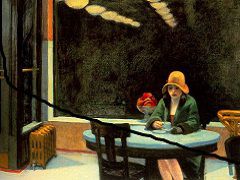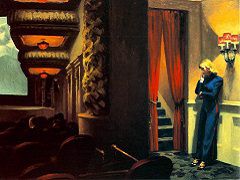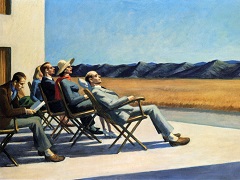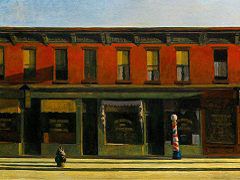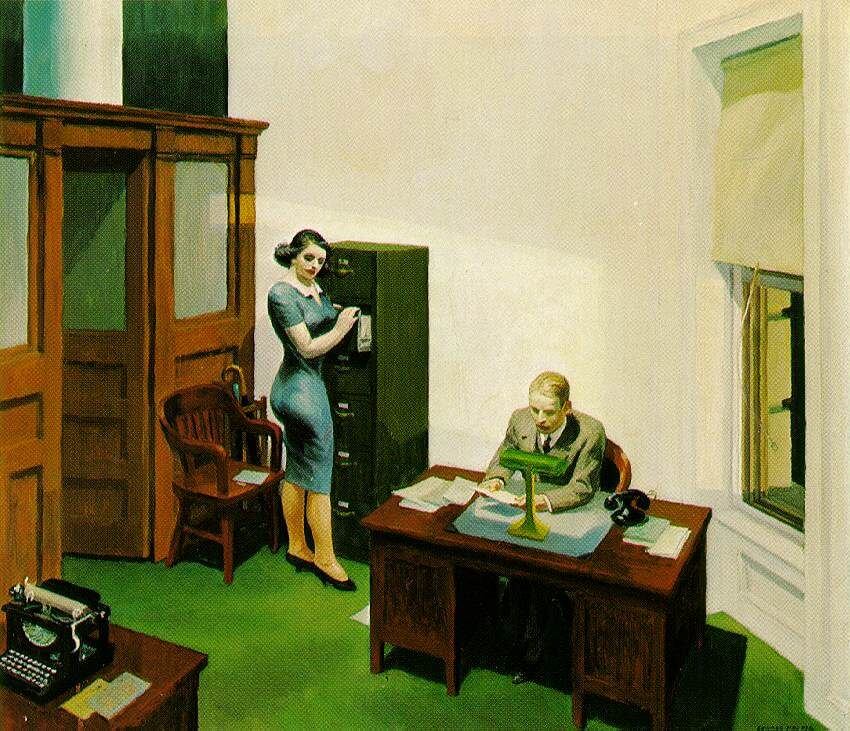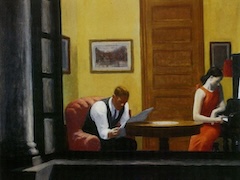Summertime, 1943 by Edward Hopper
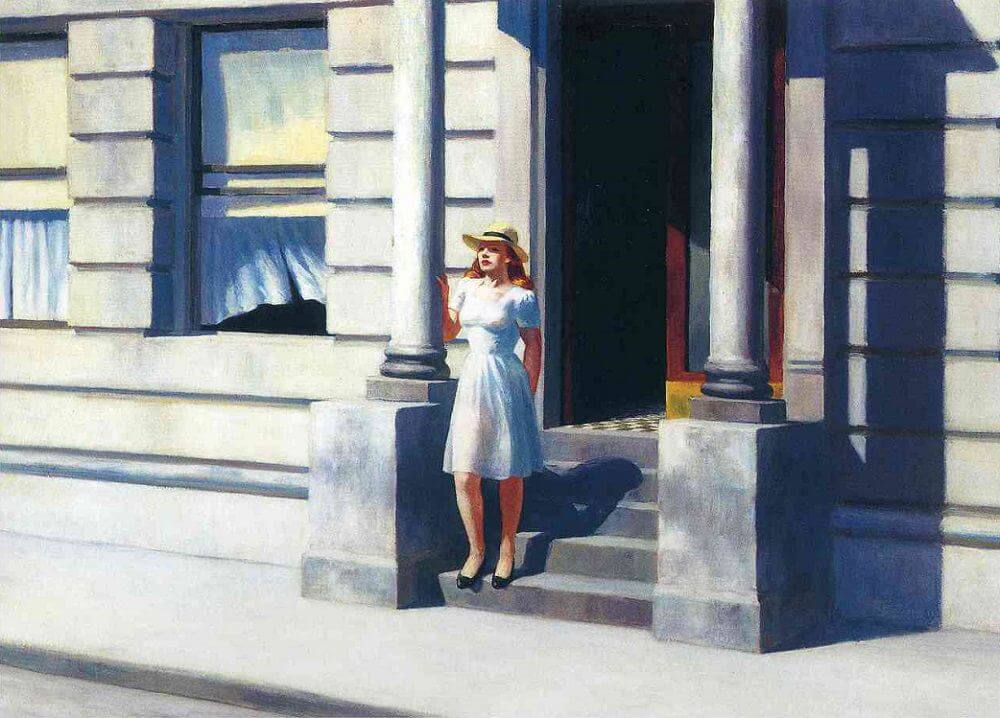
In Summertime, 1943, Hopper documents the economic upswing caused by the war, the mood of anticipation that was beginning to affect the nation, and the new relaxed morals of youth in this country. Summertime presents a young girl in a see-through dress standing outside a tenement. The outfit, obviously new, refers to the increased prosperity of the nation, which at last had been able to put aside many of the difficulties of the Depression.
The U.S. Treasury Department estimated in 1943, the year Summertime was painted, that Americans at home had saved some seventy billion dollars in cash, checking accounts, and redeemable war bonds. The department's general counsel referred to this accrued money as "liquid dynamite," and his reference aptly characterizes the woman in Summertime and makes one think that Hopper's painting is a personification of economic renewal in this country. It is interesting to consider this painting in light of New York Pavements (1924), which was created two decades earlier - The 1924 painting pictures an amazingly similar neighborhood; and the parallels between it and Summertime suggest that the baby of the earlier painting could have grown up to be the girl of 1943. Such an approach is not out of character with the Hoppers' longterm game of trying out identities for the people in the paintings. The blowing curtains of the window of Summertime may refer to the curtains of Evening Wind and might establish a poetic correspondence between the openness of the apartment window and the girl's lack of modesty. She is part of the large group of young American females who had to survive the war years as best they could, years marked by a dearth of eligible young men and an abundance of money accrued from the jobs the war effort engendered.


